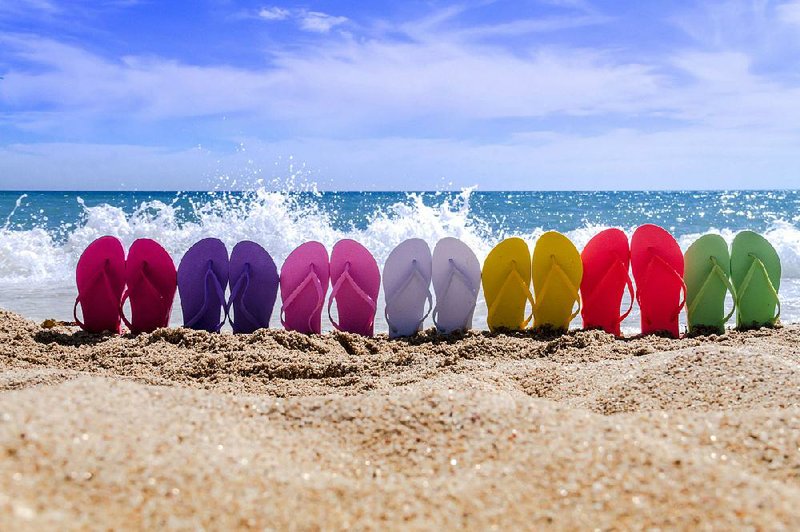Flip-flop season is here, and it's terrible for your feet.
"Flip-flops are my least favorite type of shoes worn in the summer," says Dr. Sarah Dickey, a podiatrist. "These provide zero structural support or protection for your feet."
And flip-flops aren't the only culprits. Podiatrists say many of the season's most popular shoes are some of the worst options for maintaining healthy feet by preventing injuries and avoiding heel, leg and back pain.
"This time of year ... brings in new patient complaints," says Dr. Alex Kor, a spokesman for the American Podiatric Medical Association. "Typically, the average consumer is not very well-versed on what's a good shoe ... and if you throw in a mix of activities, it makes things worse."
Kor and Dickey say customers should avoid flexible-soled shoes that allow too much bending in the midsection, near your arch. Here's a breakdown of how some of the most popular summer choices fail that test.
FLIP-FLOPS
Most flip-flops are so flimsy they can bend at every point in the sole, forcing your foot to do the same work. At the beach, flip-flops redeem themselves a bit by offering protection from sharp objects or hot sand. But don't count on them for longer days of walking or more athletic activities, Kor says.
FitFlops and Birkenstock-type shoes are good alternatives, Dickey says, because they have sturdy soles that don't allow bending.
WEDGE SANDALS
While one might argue that wedge sandals offer a stiff sole that meets the no-bend rule, they present a different problem. The heels on these shoes cause your Achilles tendon to shorten, creating a false sense of security.
Thus, someone who wears a wedge sandal may feel good all day, but then experience pain later when the foot is required to stretch in its normal capacity, Kor says.
Wedges are a better option than stilettos or other thinner heels, which Kor calls "an ankle sprain waiting to happen" because they don't have side support. If you do wear wedge sandals, Kor recommends choosing a pair that's no higher than 2 inches and stretching the feet and legs after wearing them.
FLAT SANDALS
Many flat sandals, for men and women, do not meet the podiatrists' bend test, which favors shoes that bend as little as possible in the midsection.
Dickey recommends choosing sandals that are breathable, have arch support, a rigid or sturdy sole, and straps that secure the sandal to your foot in at least two spots. Sandals with top-of-the-foot and heel straps help stabilize the foot on the foot bed of the shoe. This eliminates excessive motion, which helps prevent overuse injuries of the foot and ankle, she says.
RUBBER CLOGS
Kor considers these the "poster shoes" for footwear with flexible soles. The clogs -- think Crocs and look-alikes -- lead several patients into Kor's office each summer day complaining of arch or heel pain, he says.
Shoes without rigid or sturdy soles allow the arch to collapse too much. This can result in the most common cause of heel pain, medically known as plantar fasciitis, Dickey says.
ATHLETIC SLIDES
The support offered by these shoes varies widely depending on the design and manufacturer. Podiatrists recommend choosing brands that don't allow bend in the sole. Children should also be discouraged from wearing such shoes for running to avoid injuries that can result from the shoes getting twisted or caught in the sidewalk.
Weekend on 07/26/2018
